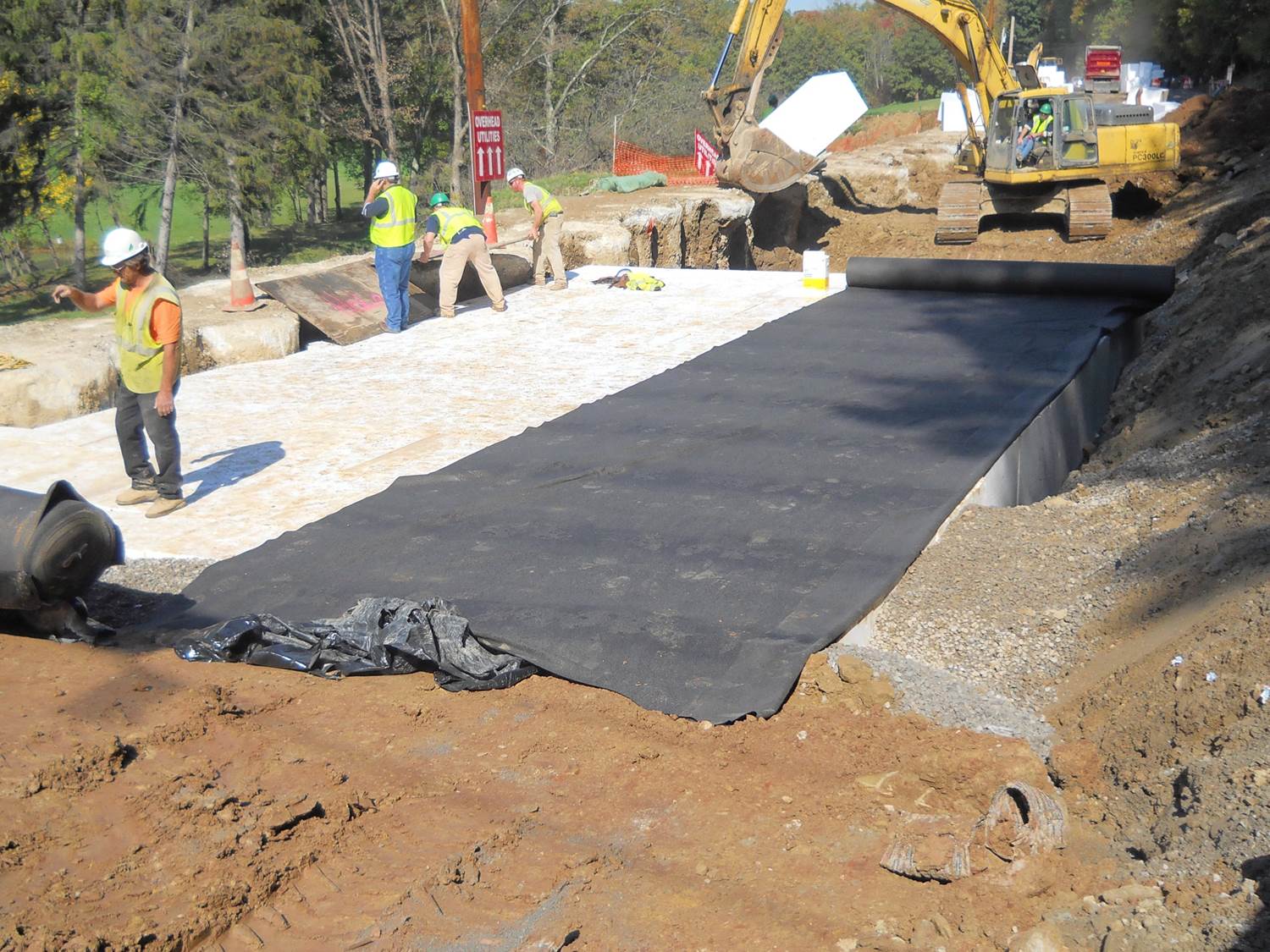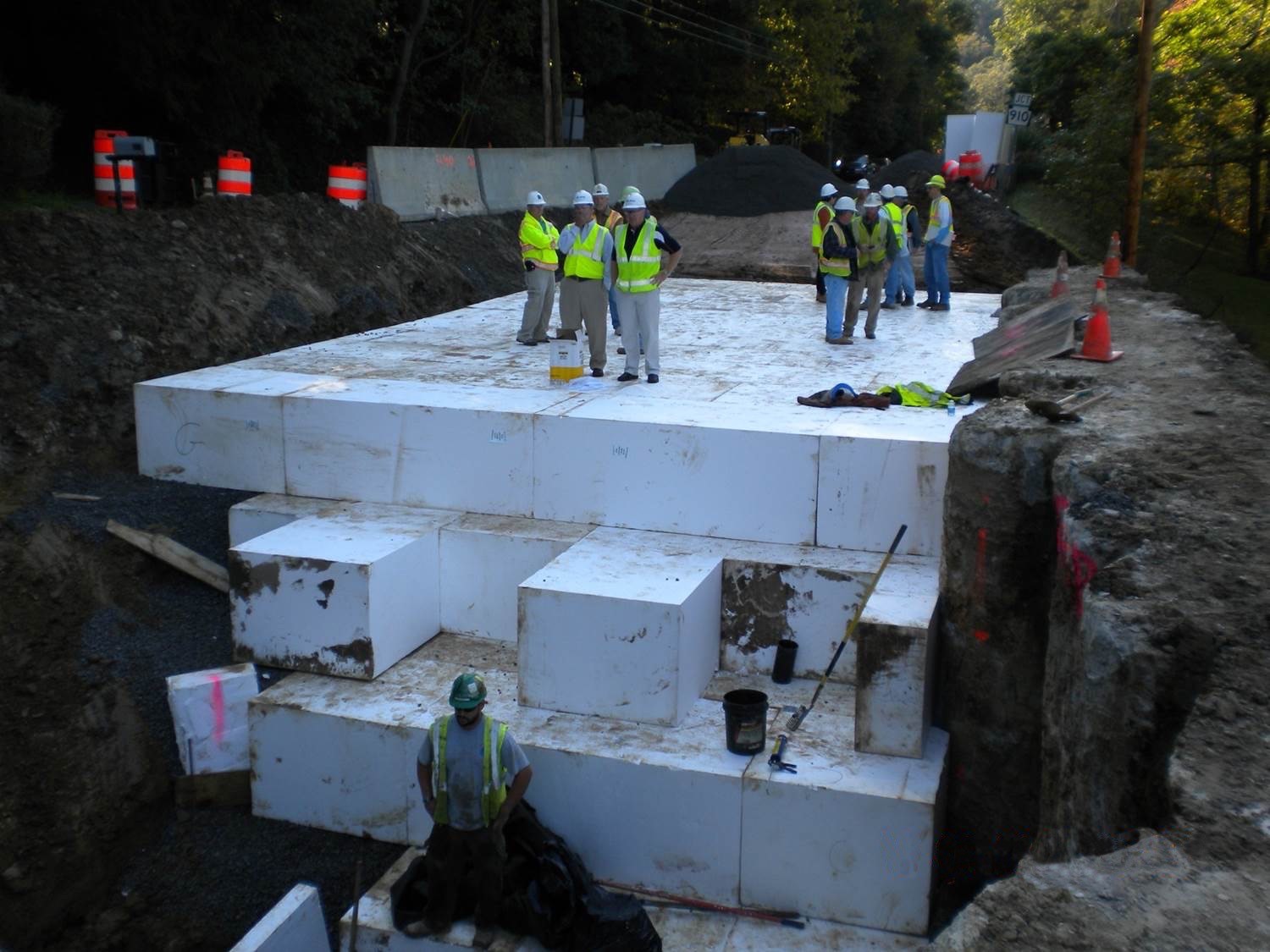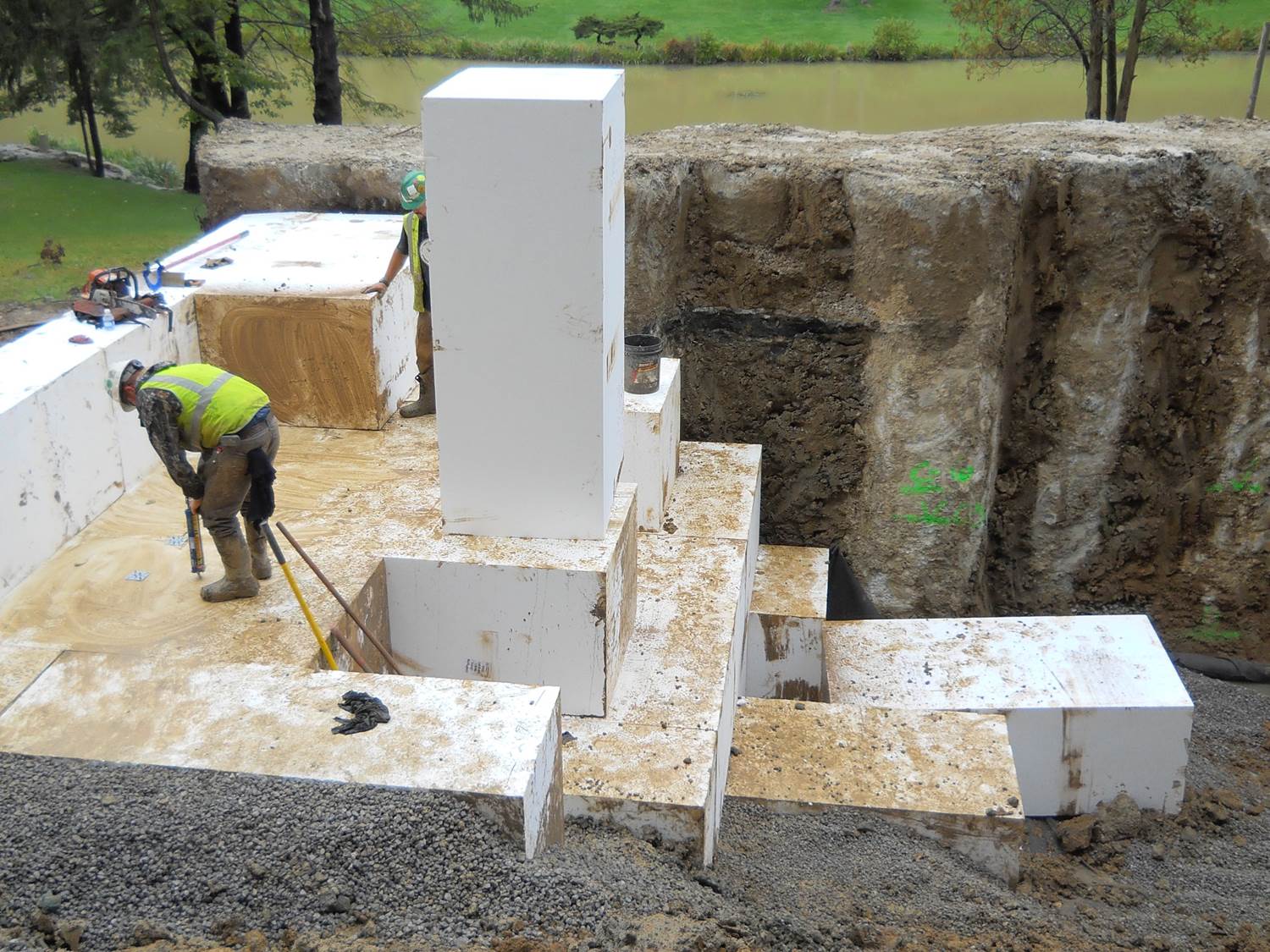Expanded Polystyrene Geofoam

Expanded Polystyrene Geofoam (EPG) is a rapid embankment construction technique used in
Accelerated Bridge Construction. EPG involves the use of a lightweight, rigid foam plastic in place of traditional embankment or backfill materials. It is much lighter than traditional materials and can be used to reduce ground settlement, ground instability, or lateral pressures exerted by the fill.
How Does It Work?
EPG is an extremely high compressive resistance material, able to adequately support traffic loads associated with secondary roads and interstate highways. EPG can be used for slope stabilization, retaining wall backfill, road embankments and pavement insulation. The foam blocks are stacked up to the desired elevation and then covered in a geomembrane material before being topped with asphalt or concrete. The use of geofoam in road construction saves time, money, and effectively allows contractors and architects to adjust their project based on field conditions. It is a very forgiving, easy-to-use material.

What Are The Benefits?
EPG accelerates foundation construction, which reduces project timelines, saves money, and requires limited labor for construction. It also exerts little to no lateral load on retaining structures and can be constructed easily in limited right-of-way areas and in adverse weather conditions. If used in colder climates, EPG helps prevent differential icing, due to the inherent insulation properties.
Innovation in Motion
EPG technology was used for a project on Pennsylvania Route 217 to protect the existing bridge and piers against settlement during construction of a new bridge and embankments. It was also used in two locations on U.S. Route 119 in Fayette County, for a gabion wall settled backfill leveling and for cross-pipe settled backfill leveling. PennDOT found this technology takes less time for the bank to settle and reduces the stress on underlying soil to increase the stability of the embankments against failure.

More Information
For more information about this innovation, contact the
STIC Management Team.